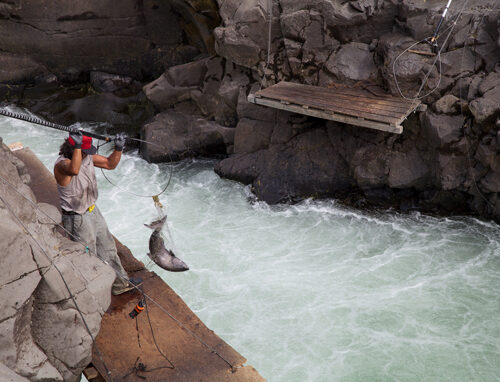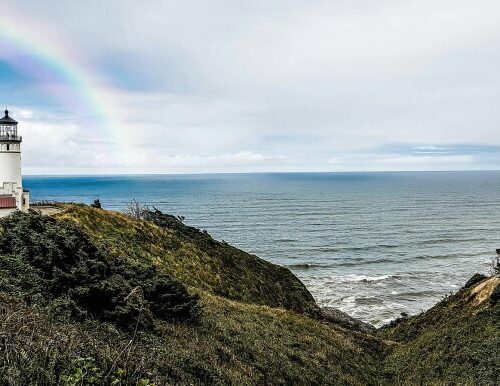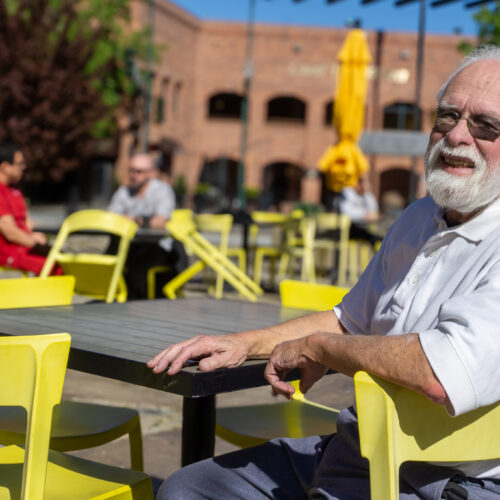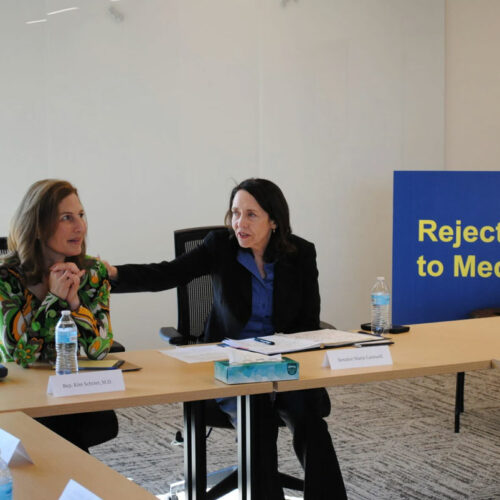
Long-Running Battle Over A Sacred Tribal Site At Mount Hood Back In Court
Read
Tribal leaders from the Confederated Tribes and Bands of the Yakama Nation and the Confederated Tribes of Grande Ronde said that the federal government knowingly destroyed a sacred religious site near Mount Hood in 2008 when it bulldozed the area for a highway safety project. The long-running case over religious freedom was back in court Tuesday.
In the safety project, highway officials added a center turn lane to the U.S. Highway 26.
Yakama Nation hereditary chiefs Wilbur Slockish and the late Johnny Jackson and Grand Ronde tribal elder Carol Logan are asking the federal government to try to return the sacred area to its original state.
“To me it’s like them going into the Catholic Church or the Protestant Church and cutting their altar or moving it in a different place and saying it’s of no significance,” Slockish said in a video talking about the case.
The tribal leaders said the destruction of the sacred site violated religious, environmental and land preservation acts.
Recently, a federal court said the government did not have to rebuild the sacred site. Now, the tribal members are appealing that decision to the United States Court of Appeals for the Ninth Circuit.
“Our nation has a tragic history of callously destroying Native American sacred sites. The question in this case is whether federal law allows that history to repeat itself today,” according to opening briefs from attorneys representing the tribal leaders.
The site was destroyed in 2008. Prior to the construction, elders attempted to alert federal officials to the sacred site, according to court documents filed by attorneys for the tribal members.
However, the elders said the federal government did not listen to their complaints about the area, called Ana Kwna Nchi Nchi Patat, or the Place of Big Big Trees.
The highway project cut down old growth Douglas fir trees, bulldozed a burial ground and stone altar, and covered medicinal plants with an earthen berm, according to the complaint.
Attorney Joseph Davis said rebuilding the site wouldn’t be difficult, including replanting trees, rebuilding of the altar, and removing the grassy berm.
The federal government said it doesn’t control the removal of guardrails or the berm alongside the highway. Planting trees likely would need to be far back from the road for safety reasons, said attorney Joan Pepin. Moreover, she said, no one knows what happened to the stones from the altar.
“All of these forms of relief are outside our hands,” Pepin said.
In today’s hearing, Pepin said that the initial October 2008 lawsuit was too late. The site already had been destroyed.
The trees were cut before March 2008; the altar, what the government calls a rock feature, was destroyed before the trees were cut; the earthen berm, what the government calls an embankment, was moved in July 2008, Pepin said.
“This project was virtually complete. Features that they claim made their site sacred are irretrievably gone before the suit was even brought,” Pepin said.
The government first wanted to widen U.S. Highway 26 from two to four lanes in the 1980s. After learning of the sacred site, highway officials altered their plans to protect the area, according to a court brief.
However, after public outcry following numerous accidents and fatalities caused by the lack of a left turn lane, highway officials decided to add a center turn lane in 2008, Pepin said.
The Oregon Department of Transportation widened U.S. Highway 26 by 14-feet over slightly more than a mile, Pepin said.
The highway project left the opposite side of the highway untouched in an effort to protect wetlands, according to court documents filed by attorneys for the tribal members.
“The government treated a nearby wetlands more favorably than the plaintiffs’ sacred site,” according to the tribal members’ attorney in court documents.
Tribes have used the site since time immemorial in religious ceremonies that cannot take place anywhere else, according to court documents. The site is less than an acre in size.
Tribes in the region had a complex migration system and searched for many food sources in the Mount Hood area prior to European settlement, according to court documents. Tribes established villages, campsites, and burial grounds for people who died along the trails, according to the documents.
Tribes used the campsites on trading trips to Celilo Falls, which later was destroyed with the construction of The Dalles Dam. Members also stopped in the area on their way to the Willamette Valley to pick a traditional food called camas.
“European settlers took advantage of this existing network of trails. Pioneer Samuel Barlow utilized these trails, one of which developed into Barlow Road, the western-most segment of the Oregon Trail,” according to the 2008 complaint.
The site is within the 12 million acres of the Yakama Nation’s ceded lands, traditional homelands tribes yielded to the U.S. government in 1855. Tribal members must be able to hunt, gather, fish, and practice religious ceremonies on ceded lands, according to treaties signed with the federal government.
In an earlier interview with Northwest Public Broadcasting, University of Washington history professor Josh Reid, an enrolled member of the Snohomish Indian Nation, said there is a long history of dispossessing tribes from their native homelands.
“This isn’t just something that happened in the safety of the past where we can all find peace and say, ‘These things no longer happen nowadays.’ No, they continue to happen,” Reid said.
However, that history doesn’t have to continue, tribal members said. In today’s appeal, the tribes argued the Federal Highway Administration and the Oregon Department of Transportation could have found ways to add a center turn lane without harming the sacred site.
According to court documents, the federal government said the tribal members never formally proposed any alternative solutions when the project was proposed. Therefore, the federal government said it should not be faulted.
Attorneys for the tribes argue the destruction of the site violated the Religious Freedom Restoration Act, which prohibits the federal government from placing a so-called substantial burden on religious practices.
“If the government’’s argument were accepted, I think it would have very far-reaching consequences for people of all religious faiths,” Davis said during a news conference. “Any house of worship could be destroyed, and apparently the government would say that’s not a substantial burden.”
Related Stories:

Yakama Power looks to alternative energy storage projects
A transmission line silhouetted by blue sky. The Yakama Nation is planning a new sort of battery, called advanced rail energy storage. (Credit: Austin Taylor / Flickr Creative Commons) Listen

Fish hatchery transferred to Yakama Nation, upgrades underway
Yakama Nation tribal members fish in the Klickitat River for fall chinook salmon. The Yakama Nation recently gained ownership of a fish hatchery on the river. (Credit: USFWS – Pacific

Hanford safety officer hired on by Yakama Nation
Rattlesnake Mountain on the Hanford site in 2022. The mountain is sacred to the Yakama Nation and other Northwest Indigenous tribes and bands near the Hanford site. (Credit: Anna King















